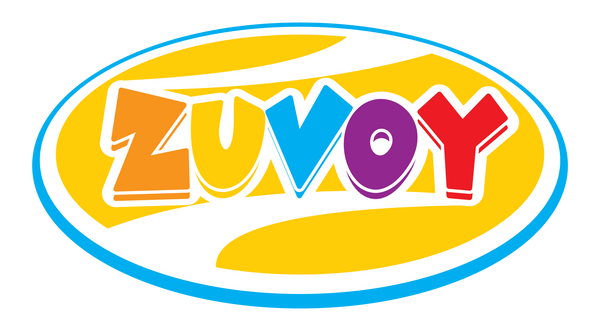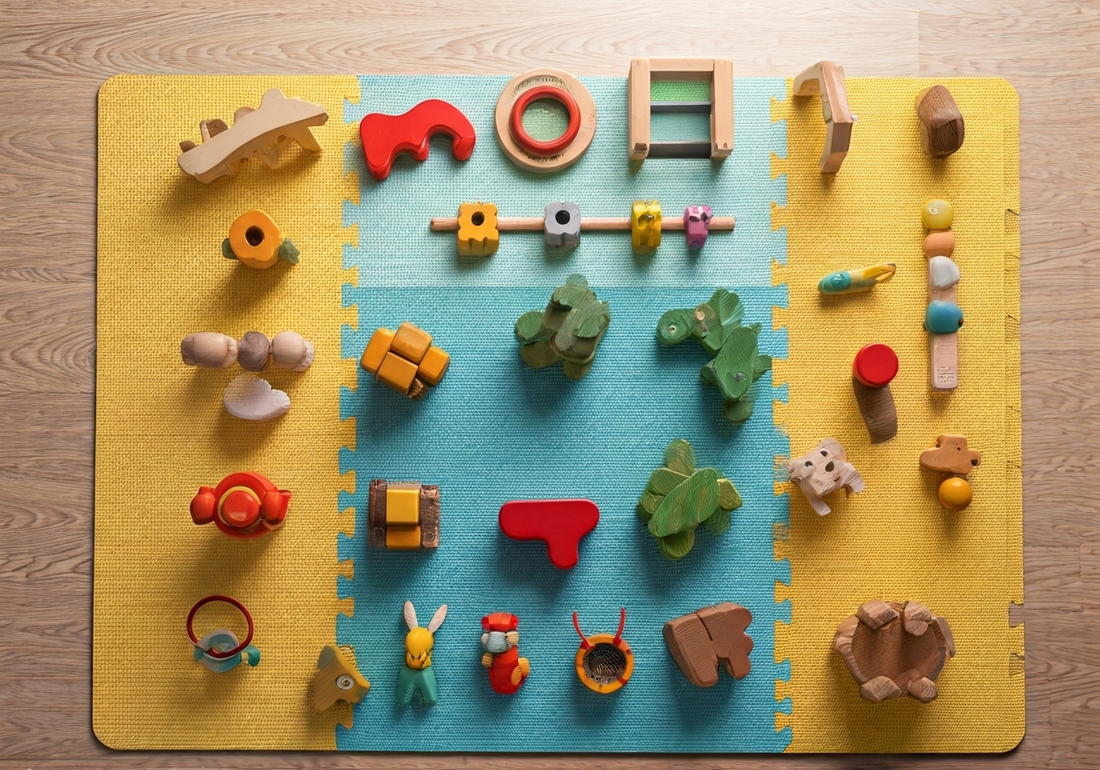Key Highlights
- Wooden toys for toddlers blend fun and learning, fostering skill development in a safe environment.
- Durable construction using eco-friendly plywood and subtle or neutral colors ensures long-lasting use and gentle aesthetics.
- Popular options like capital alphabets puzzles, steady rings, and starter sets encourage balancing and early childhood education.
- Leading brands such as Grimm, Melissa & Doug, and those made in Germany offer sale prices, unit prices, and free shipping deals for easy access.
- Parents can choose from exceptional dolls houses, letter tracing boards, and animal puzzles that support Montessori and Waldorf principles.
- Safety and quality certifications make wooden toys a trusted alternative to plastic, reducing screen time and promoting independent play.
Introduction
Engaging toddlers with activities that stimulate their curiosity and creativity is essential for early development. Wooden toys are not only durable but also provide a tactile experience that plastic often lacks. Their natural textures and subtle colours encourage imaginative play, while various shapes and features promote fine motor skills. By incorporating toys like the capital alphabets puzzle and the path finder puzzle into playtime, parents can create a rich, educational environment that fosters learning and self-discovery in their little ones.
Choosing the Right Wooden Toys for Toddlers
 Selecting appropriate wooden toys for toddlers involves careful consideration of developmental needs and safety standards. Look for toys that incorporate subtle colours and invite interaction, such as the path finder puzzle or letter tracing board. Ensure the toys are crafted from durable plywood to withstand the rigors of toddler play. Prioritize options that align with Montessori and Waldorf principles, promoting creativity and independence. Balancing educational features with engaging designs will create a fulfilling play experience that encourages growth while keeping learning fun.
Selecting appropriate wooden toys for toddlers involves careful consideration of developmental needs and safety standards. Look for toys that incorporate subtle colours and invite interaction, such as the path finder puzzle or letter tracing board. Ensure the toys are crafted from durable plywood to withstand the rigors of toddler play. Prioritize options that align with Montessori and Waldorf principles, promoting creativity and independence. Balancing educational features with engaging designs will create a fulfilling play experience that encourages growth while keeping learning fun.
Key Features That Encourage Learning and Development
Engaging children with wooden toys incorporates key features that enhance learning and development. Durable materials provide a solid foundation for exploration, while subtle colors stimulate creativity without overwhelming young minds. Toys like the path finder puzzle promote problem-solving skills, encouraging toddlers to navigate challenges. Additionally, options such as letter tracing boards and capital alphabets puzzles foster early literacy skills, ensuring a well-rounded play experience. These elements not only capture attention but also pave the way for cognitive growth, making playtime both fun and educational.
Age-Specific Wooden Toy Recommendations
For infants and toddlers, consider a starter set of wooden shape sorting toys featuring subtle colours and durable materials. As children approach age three, introduce letter tracing boards and capital alphabets puzzles to enhance their cognitive skills. Around age four, playful items like the path finder puzzle or the exceptional dolls house help in storytelling and imaginative play. Each toy is designed not only to entertain but also to engage their developmental milestones effectively, maximizing learning through play.
Safety and Quality of Wooden Toys in India
 Ensuring the safety and quality of wooden toys in India is paramount for peace of mind. Parents should prioritize products that are free from toxic chemicals, adhering to stringent safety standards. Look for trusted certifications that guarantee durability and non-toxicity. Brands like Melissa & Doug and Grimm exemplify excellence through their high-quality materials and thoughtful designs, nurturing creativity while providing a safe environment for play. By selecting well-made, eco-friendly toys, caregivers can foster learning and inspire limitless exploration.
Ensuring the safety and quality of wooden toys in India is paramount for peace of mind. Parents should prioritize products that are free from toxic chemicals, adhering to stringent safety standards. Look for trusted certifications that guarantee durability and non-toxicity. Brands like Melissa & Doug and Grimm exemplify excellence through their high-quality materials and thoughtful designs, nurturing creativity while providing a safe environment for play. By selecting well-made, eco-friendly toys, caregivers can foster learning and inspire limitless exploration.
How Wooden Toys Compare to Plastic: Safety and Eco-Friendliness
Safety and eco-friendliness are paramount considerations for parents choosing toys. Wooden toys often outshine plastic counterparts due to their natural, non-toxic materials, making them a healthier choice for toddlers. Unlike plastic, which can leach harmful chemicals, wooden toys provide durability and longevity, reducing waste. Additionally, they are generally crafted from sustainable resources, ensuring a minimal ecological footprint. As a bonus, the subtle colours of wooden toys can stimulate a child's imagination far better than the bright, synthetic hues of plastic.
Trusted Brands and Certifications to Look For
Quality wooden toys often come from trusted brands renowned for their commitment to safety and eco-friendliness. Look for certifications from organizations like the American Society for Testing and Materials (ASTM) or the European EN71 standards, which ensure the toys meet rigorous safety criteria. Brands such as Melissa & Doug and Grimm prioritize durable materials and non-toxic finishes, making them excellent choices. By selecting toys from these reputable sources, parents can foster a safe and enriching environment for toddlers to learn and play.
Educational Advantages of Wooden Toys
Wooden toys offer numerous educational advantages that foster creativity and cognitive development in toddlers. Their natural textures and subtle colours engage children's senses, promoting exploration and imaginative play. Additionally, toys like the path finder puzzle and letter tracing board encourage problem-solving skills and fine motor development. With an emphasis on independent play, wooden toys also help reduce screen time, allowing little ones to engage with their surroundings. This hands-on experience aligns with both Montessori and Waldorf principles, enriching the learning journey.
Supporting Montessori and Waldorf Principles at Home
Integrating wooden toys into your home can significantly align with Montessori and Waldorf principles, promoting exploration and creativity. These toys, such as a letter tracing board or balancing games, encourage self-directed learning. Their neutral and subtle colours appeal to toddlers without overwhelming them, fostering a calming environment. Additionally, items like the path finder puzzle or the exceptional dolls house promote imaginative play, allowing children to explore their identities. This approach nurtures a love for learning while developing essential skills naturally.
Promoting Independent Play and Reducing Screen Time
Encouraging independent play fosters creativity while helping toddlers develop critical thinking skills. Engaging with wooden toys, such as stacking blocks and shape sorters, allows children to explore at their own pace, enhancing cognitive abilities. As toddlers immerse themselves in these hands-on activities, they naturally reduce reliance on screens, leading to healthier play habits. The tactile experience of wooden toys, combined with their subtle colours and durable design, makes them an excellent choice for parents aiming to nurture imaginative play while minimizing digital distractions.
Conclusion
Incorporating wooden toys into playtime not only nurtures creativity but also enhances cognitive abilities in toddlers. Their durability and eco-friendliness make them an ideal choice for parents seeking sustainable options. Emphasizing skills like balancing, tracing letters, and even fostering independent play, these toys align seamlessly with educational philosophies such as Montessori and Waldorf. Ultimately, investing in quality wooden toys can pave the way for a joyful and enriching childhood experience. Encourage exploration while safeguarding both fun and learning!
Frequently Asked Questions
How do I clean and maintain wooden toys for durability?
To clean and maintain wooden toys, use a damp cloth with mild soap. Avoid soaking or submerging them in water. Regularly check for signs of wear and treat with natural oils to preserve the wood. Store in a dry place to prevent moisture damage.
Are wooden toys suitable for toddlers with special needs?
Yes, wooden toys can be highly beneficial for toddlers with special needs. Their tactile nature promotes sensory exploration, while safe designs encourage independent play. Additionally, many wooden toys support cognitive development through problem-solving and fine motor skills, making them an excellent choice for all children.
What’s the difference between handmade and mass-produced wooden toys?
Handmade wooden toys offer unique craftsmanship and attention to detail, often using natural materials, while mass-produced options prioritize efficiency and cost. The former typically promotes sustainability and individuality, whereas the latter may lack the same level of quality and eco-friendliness.

